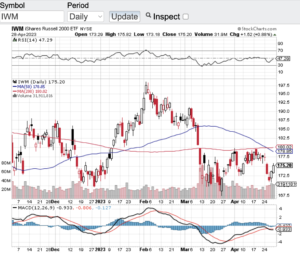It’s the same old, same old for the stock market. New record highs were set today on the S&P 500 (see chart here) and the Nasdaq Composite (see chart here)! Wait a minute, didn’t the government partially shutdown earlier this week? And yet the markets are still hitting all-time highs! Well hopefully the gov. figures this out as quickly as possible so that what is shut down can reopen. As the S&P 500 and the Nasdaq hit all-time highs today, both the Dow Jones Industrial Average (see chart here) and the small-cap Russell 2000 (see chart here) are within striking distance of their respective all-times highs as well.
So, what in the world is going on with our markets? For starters, corporate earnings for the most part have exceeded expectations up to this point despite the swath of tariffs that have been imposed this year. Secondly, the Federal Reserve cut interest rates last month and have signaled they are prepared to reduce rates further if needed. From the looks of things, lower rates are becoming more obvious as the job market continues to struggle. Normally, I would be concerned of how frothy the markets look and there are pockets of the market that are frothy. However, if corporate America continues to deliver better than expected earnings, coupled with a more accommodative Federal Reserve, the chances of stocks going higher into year-end is a strong possibility. I am not suggesting this will be the case, but I am beyond impressed with how resilient the stock market continues to be.
As I look at the technical shape of the key indexes the Dow Jones Industrial Average (see chart here) and the Russell 2000 (see chart here) are comfortably trading above their 20-day, 50-day and 200 day moving averages. Furthermore, both indexes are below the 70 value level of the Relative Strength Index aka the RSI. The 70-value level of the RSI is considered entering overbought territory. So, it appears that these two indices have room to run. A bit of a different story with the S&P 500 (see chart here) and the Nasdaq Composite (see chart here) whereas today both have tapped the 70 value level of the RSI. Please note that with the RSI it is not uncommon for stocks or indexes to go past the initial overbought level of 70 and proceed to as high as 80 and in some instances the 90 value level of the RSI. An 80 and especially a 90 value level is viewed as extremely overbought according the RSI principles. No matter what the case is, this bull market seemingly is not tired yet.
Good luck to all 🙂
~George
